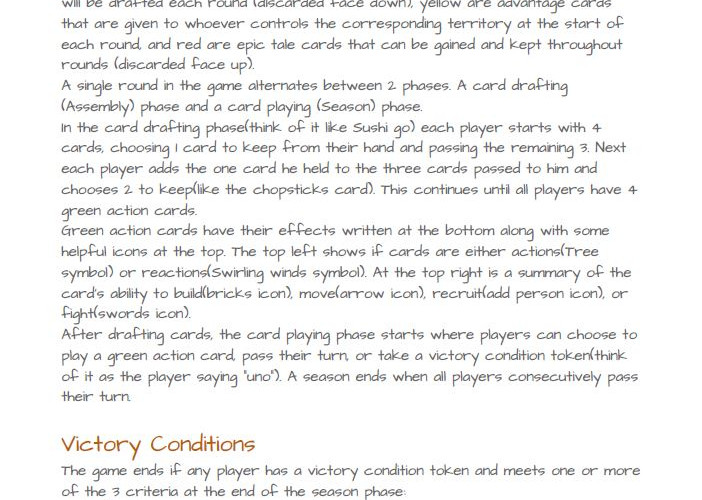Playing a game for the first time is a lot like mining for gold. It takes physical effort to break through the hard top soil of excuses like “being busy” or “tired” or “having a medical emergency.” It takes precise planning to pick a place to dig in. You have to pay attention to rules as if your life depended on it. Failure to obey these rules could lead to a job related injury, a cave in, or worst of all, a repeating of the rules in a sassy tone. With so much initial investment at stake it is crucial to get to the pay off as soon as possible. The longer you spend sifting through the rivers of rules, the less impressive the appearance of golden flaked gameplay. So please, learn from previous prospectors and know your game, inside and out, setup and gameplay, start to finish. Aim to minimize “so what does this do?”... “let me read the rules to find out.” Save yourself a bunch of confusion and play a game on your lonesome (Preferably in a dark, dank mining shaft). If there is a single golden nugget you get out of this it is that you truly need to be confident in your understanding of a thing before you go and teach it to someone else. There are several great articles/videos that go into more detail about generic pitfalls of rules explanations. but for my contribution I’ll focus on some specific examples. For fear of waxing poetic in my echoing of epitaphs of explanations gone by, let me point your attention to a specific example:
Below are 3 versions of rules explanations to Inis, a fantastic area control game of warring Celtic(not that kind) tribes vying for power that combines simple card-driven gameplay with acid trippy good artwork.
1. On the nightmare end of the spectrum is a 23 minute rules explanation
2. Par for the course lies in the original 12 pages of rules
3. And this is the easily digestible version I use to explain the game
So let’s compare the 3:
#1 - Overkill Me
There is a point in the video where after 20ish minutes into the explanation a player asks what a certain token does and they respond with, “when it comes up in the game we’ll get to it.” Then what was the point of this drawn out exercise if we could just learn as we go!!!! (The comments all seem to pick up on the fact that there is more tension than usual between some members of the group, probably had nothing to do with the half hour soliloquy.)
#2 - Bland Before Time
The most common killer of fun. You lay everything out. Your friend points at a thing. You look for that thing in the rules. There is an icon. Which leads to existential dread...and tears. In all seriousness rulebooks are essential pieces of the game, not easily thrown out with the plastic wrap the game came in. They are gorgeous and give detailed examples of gameplay and help in gaining a complete understanding of all the game’s parts.They are great for rules clarity, not so much for concise setup.
#3 - Personalized Prize
That’s where a more personalized approach is needed as shown in part III. Depending on the type of group you play with your rules may differ in their delivery or detail from the ones given in the rulebook. But a good general rule of thumb is to treat new game explanations like a resume. Two pages max. Concise explanations of what you can do with references to other games that use the same basic mechanisms to give players something familiar to latch onto. In my version of Inis rules I reference sushi go’s pick and pass elements along with uno’s namesake endgame announcement.
TL;DR Wait, this article is downright concise. How is it too long to read? The only thing left up in the air is your unique interpretation and fine tuning of games to your group’s particular tastes. It really is just a matter of taking the time to read, play, and clarify any questions about a game before you force it upon your victims. Speaking of reading, you should definitely reread that intro. It’s solid gold.





























Comments